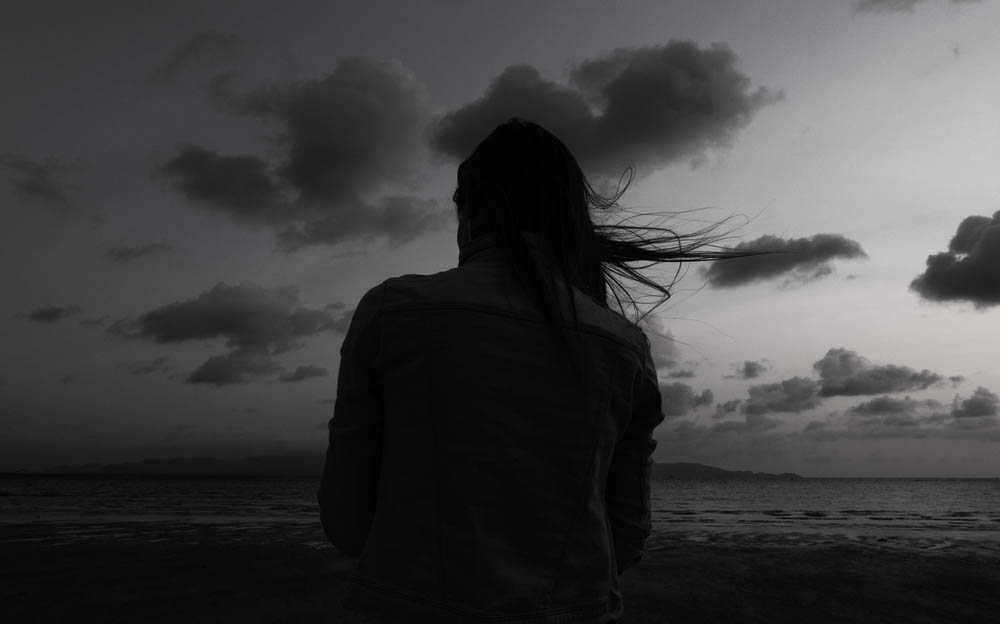It was a Friday afternoon at the animal hospital where I worked part-time during grad school. A woman named Anne came in to pick up food for her cat. As I rang her through, I asked how she was doing. She looked down, then up, and I saw tears in her eyes. She told me her teenage daughter, Ellie, had just been admitted to the psychiatric hospital again. Ellie had been cutting her arms and legs with razor blades. Anne and her husband were terrified, unsure how to help. They had told the youth minister at their church some of what was going on, but not everything. Anne didn’t want Ellie to be shamed or ostracized.
We sat together for a few minutes in the lobby. Then Anne turned to me and asked, “This has been so hard for my family, we are falling apart. Where is God in all of this?” I was in graduate school for practical theology at the time, studying trauma, and yet, I had no good answer. No book I could name. No resource I had seen that took self-injury seriously from a spiritual perspective. That moment stayed with me and became the seed of this work.

Turning to Memoirs
When I began my doctoral research, I returned to that question: where is God when someone is cutting themselves to cope with what’s happening in their lives? I quickly realized that the existing theological literature on self-injury was sparse. So I turned somewhere else: to memoirs written by people with lived experience of self-injury. I scoured Goodreads, library databases, and obscure online archives until I had a stack of books, mostly written outside the academy, often overlooked.
These memoirs were messy, raw, brilliant. They weren’t framed as theological texts, but they were rich with spiritual insights. They spoke of silence, shame, transcendence, and survival. They gave language to the wordless ache Anne had named that day at the front desk. I knew I had found my “way in” to listen to the voices of people who self-injure.
Spirituality, Shame, and Silence
Self-injury has long been misunderstood in both faith communities and clinical spaces. Historically, it’s been pathologized by psychiatry and silenced or moralized by religion, leaving little room to understand it as a way people try to survive unbearable pain. I wondered what the memoirs would say that could help us better understand why people self-injure? Many of the memoirs I read didn’t use religious language, but they were full of spiritual questions. Questions like: Am I broken beyond repair? Does anyone see me? Can I still be loved, even with these scars?
Some writers described growing up in churches that didn’t know how to handle pain, where suffering was either minimized or seen as a failure of faith. Others shared how self-injury was never mentioned at all, how even in prayer groups or youth ministries, they felt invisible. And for those who did reach out, many were met with fear, misunderstanding, or shame.
And yet, woven through these stories were moments of deep connection, times when someone listened without flinching, when someone simply stayed. Those were often the moments that began healing. Not advice or scripture verses, just sacred presence.
What the Memoirists Have to Say
The memoirs I read didn’t end with simple solutions. But they did offer signposts—insights that could help us move with more care. In my dissertation, I organized these insights around the key relationships the memoirists spoke to most often: their families, the mental health system, their faith communities, and even God.
- To their families, many memoirists wished they could say: Please don’t try to fix me, just sit with me. Love me even when you don’t understand me. Take responsibility for the emotional and sexual abuse you have put us through.
- To the mental health system: We are scared of the psych wards and being locked up.See me as more than a diagnosis. Let me speak for myself. Don’t punish my pain.
- To faith communities: Don’t shame me or look away. Make room for me at the table, even with my wounds. Stay with me on this long journey with self-injury.
- And to God: If you’re here, I need you to be gentle. I need you to stay.
These weren’t demands. Rather, they were longings. The kind that come from people who have already been told too many times that they are too much, or not enough. The memoirists offered a plea to be met with compassion. That’s what I carry with me from this work. The reminder that healing doesn’t happen through answers, but through presence. Through listening and through love that stays.
Where I Am in This Work
I come to this work as a survivor-researcher. Someone who has lived with these questions, not just in theory, but in my own body. I used to self-injure when I was younger, and go back to those behaviours sometimes when things get really hard. My academic work, my teaching, and now my clinical training in spiritual care and psychotherapy are all shaped by that lived experience.
Mad Studies provided the “backbone” of the critical theory in my project and I am grateful to the Mad Studies scholars, activists, allies and psychiatric system survivors who have gone before me to pave the way for a dissertation like this to be written. This framework helped me approach self-injury not as pathology to be eliminated, but as communication that deserves to be heard. It gave me permission to centre the wisdom of those with lived experience over the clinical gaze that so often reduces self-injury to symptomatology.
Through this lens, I could see how the medicalization of self-injury has often obscured its meaning-making aspects such as the ways people use their bodies to express what words cannot say. Mad Studies helped me recognise that when we pathologize self-injury, we often miss its survivalist logic: that for many, it represents not a desire to die, but a desperate attempt to stay alive through unbearable pain.
My grounding in practical theology helped me approach these memoirs not just as data, but as sites of spiritual meaning, places where deep questions about pain, God, and care are being worked out in real time.
What This Work Has Taught Me About Care
Working on this project reshaped how I understand care. Not as intervention or fixing, but as staying close. Care, as I’ve come to see it, is about sitting beside someone when the pain is too loud for words and not leaving. I no longer look for the perfect response when someone shares something hard. I look for presence. For a gentle, non-anxious witness. And I hope that’s what this post offers too, a kind of witness to the complexity of self-injury, and to the sacredness of the people who live with it.
What Faith Communities Can Do
The most common question I get asked at conferences or over a cup of coffee when discussing my research is: what can faith communities do? Faith communities have unique opportunities to offer care to those who self-injure. From my research, I’ve distilled several practical approaches:
- First, create spaces that can hold pain without rushing to fix it. The memoirs showed how rare and healing it was to find religious spaces where suffering wasn’t treated as something to overcome quickly or hide away. Consider how your community talks about pain. Is it always framed as something to “get through” or “move past”? What if we created liturgies, prayers, and gatherings that acknowledge ongoing suffering?
- Second, develop theological language that honours the body, even wounded bodies. Many memoirists described feeling alienated by body-denying theologies that seemed to have no place for their wounds and scars. Faith communities might reconsider how they talk about bodies, moving away from healing narratives toward theologies that embrace embodiment in all its complexity.
- Third, offer genuine community rather than crisis-only care. Many memoirists described how people showed up during hospitalisations but disappeared during the long, ordinary days of healing. Faith communities are uniquely positioned to offer ongoing presence; not just professional care, but authentic relationship that persists beyond crisis.
- Fourth, adopt trauma-informed approaches to worship and community gatherings. Many Christian faith gatherings incorporate powerful imagery around suffering, blood, and wounding; think of communion services or Good Friday observances. For someone who self-injures, these rituals can be profoundly healing, deeply triggering, or—perhaps most commonly—a complex mix of both simultaneously. The same imagery that offers connection might also awaken difficult emotions. Faith communities might consider how to create trauma-informed spaces by:
- Offering clear descriptions beforehand of what will happen in services that involve intense imagery or narratives
- Creating alternative pathways through difficult liturgical moments (perhaps a different station during communion for those who find the blood imagery overwhelming)
- Ensuring trained companions are available for those who might be triggered by certain theological imagery
- Reconsidering language that frames suffering as always redemptive or necessary
This isn’t about watering down tradition, but rather making thoughtful choices that acknowledge the diverse ways people might experience sacred practices.
Closing Reflections
Self-injury is usually hidden and so are the spiritual questions that come with it. But they’re there beneath the surface, in the silence, and in the scars. What I’ve learned from this work is that people don’t need us to explain their pain away. They need us to stay with them in it. If you’re reading this as someone who cares about others, you don’t need perfect words. You don’t need a degree in theology or mental health. You just need to show up, to stay soft, listen, and to make space for people to be as they are.
And if you’re someone who self-injures, or has in the past: you are not alone. Your pain is not too much. Your story matters. And there are people, and maybe even a God, who can hold that story with care. This work has taught me to believe in quiet forms of healing. Not miracles or fixes, just the slow, sacred work of presence. That, I think, is soul care. As I continue my journey as both an academic and a therapist-in-training, I carry these stories with me. They inform how I sit with clients, how I teach students, and how I understand my own healing. They remind me that theology isn’t just found in scholarly texts, but in the lived experiences of those navigating pain and possibility.















“My academic work, my teaching, and now my clinical training in spiritual care and psychotherapy are all shaped by that lived experience.”
Thank you for admitting the psychologists are “partners” with the paternalistic pastors, since I already have medical and legal evidence of this, and their systemic, faustian child abuse covering up “partnership” is problematic.
“My grounding in practical theology helped me approach these memoirs not just as data, but as sites of spiritual meaning, places where deep questions about pain, God, and care are being worked out in real time.”
Let’s all pray to bring about God’s actual will on this planet, and end Satan’s reign.
Report comment
Formatted grace loses its grace—no matter how well-intentioned.
Report comment
I have deep reservations about curated presence, whether grounded in theory, theology—or curation of any kind.
Report comment
There’s nothing shameful about self-harm, but publicizing makes it impossible to forget—or worse, someone co-opting it.
Report comment
No one needs sermons or “therapy”. They need companionship without agenda.
Pain needs to be met, not managed.
Report comment
Presence is tokenized when it’s turned into a TED talk, especially by those who’ve never sat in their own grief for very long.
P.S. Grief that hasn’t been fully metabolized repackages itself as expertise.
Report comment
… or finds an audience that calls it insight.
Report comment
… or finds a congregation that calls it revelation.
Report comment
Healing happens when you ignore the syllabus, when you avoid people with the urge to therapize or theologize.
Report comment
Diagnosing is a form of crucifixion—but not the kind that promises resurrection.
Report comment
Theological absolutists damn the soul. Psychological absolutists damn the person.
People who construct themselves around epistemic authority are threatened by those who see through them.
Report comment
Manufactured presence speaks from a script—psychological or theological. Organic presence speaks from the soul.
Stay away from people who live inside psychological or theological frameworks to quiet their own inner chaos.
Report comment
Why? Because people need to be seen without being appraised, to be recognized without being scanned, to be received—not parsed, by people who know there’s more to them than their pain.
No one should trade intimacy for interpretation of any kind.
Report comment
Control is not care. It’s counterfeit care.
Report comment
Amy,
Every time you cut you release opioids. So if you keep cutting and keep getting opioids, it might become an addiction.
Report comment
I appreciate any attempts to understand self injury and cutting, that attempts to help calmly understand and help rather than catastrophize the cutting. I was placed in the psychiatric /mental health treatment system at the age of 15 because I was cutting. The ‘treatment’ was infinitely more devastating than the actual cutting (which was very mild compared to other teens I saw) . This was in 2002, in a very small rural town, so I don’t know if teens in my predicament in this era had better care, but I didn’t get a clear sense from any of the therapists or psychiatrists whether they even understood why I was cutting, or that it had nothing to do with suicidality (even though I told them it multiple times). They all seemed scared of it and the frequent suicide screening questions was kind of emotionally scarring. The psych meds they put me on just continued to escalate, different meds, higher doses, new diagnoses- by the time I went to college I was upgraded to mood stabilizers in addition to antidepressants. I gained a lot of weight and struggled with panic attacks and emotional numbness.
Not to mention that my high school classmates all found out I was apparently ‘mentally ill’ and seeing a psychiatrist and treated me with derision, scorn, and fear.
Yet the complex causes related to my cutting were never seen or addressed by my mental health care providers. Somewhat in their defense this is a systemic issue. I did not have the wisdom or insight to identify that my parents both being emotionally volatile/unstable with serious rage issues, was traumatizing me, or the words to identify the cruel bullying I endured at school- I didn’t understand how to voice my oppression by the powerful societal forces that I couldn’t cope with, the difficulties of the expectation to be pretty and feminine and sexual, as a socially awkward teenage girl with little interest in or understanding of fashionable clothes or makeup or hairstyles.
No it was mostly just, endless repetition every visit of, are you suicidal, any thoughts of killing yourself or of death? And if I ever said something like, yeah sometimes I wish I was dead, it was like oh my god let’s up that dose until your emotions are completely blunted.
Report comment
I don’t think much has changed in the psych industry, except the number and variety of junk that’s prescribed in the name of “treatment—with idiots on TicTok doing the advertising for free.
Report comment